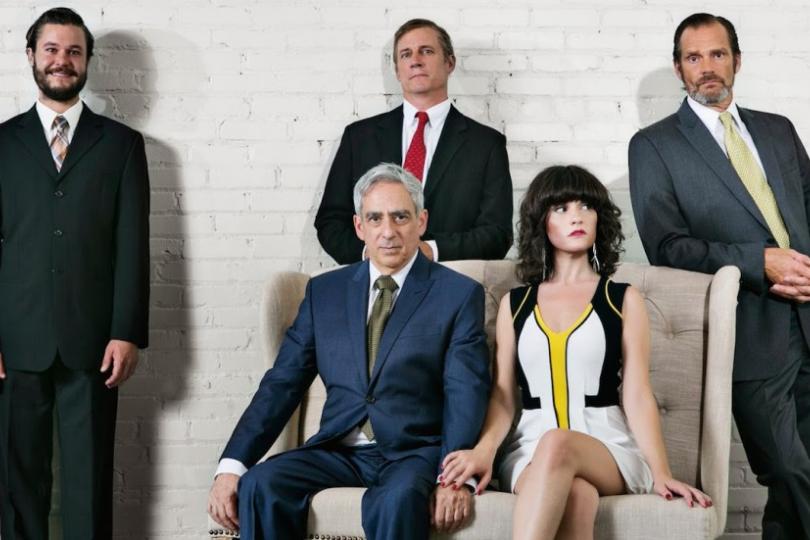Best of 2014-15: Hothouse (and more)

Despite all the faith I have in our theater community, I’m not always excited as I walk into a theater. Theater is full of unknowns, and I often have a moment of trepidation as I get settled in with my program, speculating about the evening to come. What will I be talking about at intermission? Will I wish the play was shorter? Will I be frustrated by a questionable plot point or some off-the-mark political subtext? Or, on the other hand, will I see something new and thrilling that I can’t wait to share?
For me, good theater isn’t about being excited walking into the theater, but being excited walking out of it. I always look forward to the rare moments – or, even rarer, the full production – that make me leave the theater feeling energized, inspired, and eager to share what I just saw on stage. In case you missed them, here are some of the moments that made me excited to be a critic this year.
Bringing down the house: In the middle of Ghost Sonata at the Nimbus Theater, the entire façade of a house fell off, revealing an elaborate indoor set. The sudden gust of air across the audience’s face, the moment of fear that something has gone wrong, the thud of the flats hitting the stage – this was a scene change the audience could feel. Kudos to set designer Zach Morgan for daring to make an impact.
Cheering up the holiday season: Although a falling set makes a strong impression, a play’s impact can be just as powerful by relieving the sense of despair I get when looking at a seemingly endless list of holiday shows. Enter Beaverdance. I feel a bit ashamed that a musical about Karl Marx in a Santa suit and a troupe of dancing beavers is making it onto my “Best of” list, but it made me laugh a lot, and it was also pro-union. Feel free to question my lowbrow taste, but I’m fully supporting this one.
How to spot a good director: From lowbrow to highbrow, a good director can make all the difference. Here’s how you know when a director is really on top of her game: when she can turn a bare-bones workshop production of Chekhov into some of the best ensemble acting you’ve seen all year. Genevieve Bennett created a richly-textured world out of the The Cherry Orchard, bringing out the best in both her cast and Chekhov’s text. I actually used the word “transcendent” in my review. Workshop? Yeah, right.
Brain candy: Normally, if a show describes itself with works like “appropriation” and “recontextualizing,” I instantly get annoyed because I won’t be able to share it with anyone who hasn’t been to graduate school in the humanities. A counter-example: Billy Mullaney’s Uncreativity Festival, which made accessible and entertaining theater out of borrowed pieces of text like a quantum physics lecture or an episode of Mr. Rogers’ Neighborhood. The whole concept of the evening seemed so improbable, and potentially so pretentious, that I became an instant fan as soon as Mullaney started reading word problems out of a high school geometry textbook and I realized it was, shockingly, a lot of fun to listen to. An entertaining way to reconsider how artists choose the texts they perform, this was a bit of brain candy you didn’t have to be an academic to appreciate.
A production that hits all its marks:
This is a “Best of” article, so I realize I need to pick something that was actually the best. You probably saw it, because it sold so well that they extended the run: I’m giving this one to Dark & Stormy’s The Hothouse. It was so good that, thinking back on it, I almost forgot about all it initially had going against it. Dark & Stormy was a relatively new company that decided, for its fifth show, to stage a weird play by Harold Pinter in the Grain Belt Bottling House in the middle of the winter. This does not sound auspicious… and yet they packed the house on a five-week run.
At the time, I blamed their wild success on a deal with the devil, but Dark & Stormy deserves more credit than that, because they did an amazing thing with a very strange play. To put it simply, The Hothouse is a dark satire of administrative incompetence, as the staff members of an English “rest home” (aka mental hospital) attempt to cover up a number of minor scandals. But Pinter doesn’t make it easy for his actors: he peppers his dialogue with unspoken subtext, and there is a clear shift in tone at intermission, from a first act that simmers with menace to a second act that lays bare the hospital’s hierarchies, manipulations, and outright sinister dealings.
The cavernous space of the Bottling House provided a perfect setting for the impersonal coldness of a mental hospital, but the sound design, with the actors mic’ed into individual headsets, created a sense of intimacy that provided a perfect way into the subtleties of the script. Speaking directly into our ears, the actors moved through a wide vocal range, including mumbles and whispers, that allowed them to bring out bits of comedy and creepiness that otherwise might have flown under the radar.
Dark & Stormy brought together a stellar cast for this one, including Robert Dorfman as a childish bureaucrat with too much power and too little responsibility, and Mark Benninghofen and Bill McCallum as a chilling pair of subordinates – one highly disciplined, the other a shamelessly smooth talker. John Catron and Sara Marsh were also excellent as a naïve newcomer and a cool, calculating seductress.
Of all of the points that stood out about the shows I mentioned above, The Hothouse had it all for me this year. It resonated with current issues about power and hierarchy without being painfully cerebral, and its design elements played an important role in bringing its off-kilter, eerie world to life. Finally, and maybe most crucially, it had a director, Ben McGovern, who knew how to get the most out of a space, a text, and a cast.
I’m ready for some more of this alchemy in 2015-16. Pick a weird or daring text, find the right people to make it, make bold design choices, and commit. I might be nervous on my way into the theater, but I want to be invigorated on my way out.




